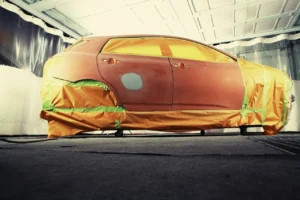Towing a trailer adds an entirely new set of responsibilities to your driving routine. The most important one? Ensuring that your trailer hitch is securely connected before you pull away. A poorly secured hitch can cause trailer sway, jackknifing, or complete separation from your vehicle — all of which are dangerous and avoidable.
The good news is that you don’t need to be a mechanic to check your hitch connection. With a careful, step-by-step approach, you can confirm everything is locked in place, balanced, and ready for a safe trip.
1. Start with a Visual Inspection
Before you touch anything, take a slow walk around the hitch area. Look for obvious issues like:
- Bent or cracked hitch components
- Rust or corrosion that could weaken metal parts
- Loose bolts, nuts, or pins
- Damaged safety chains or electrical wiring
If something looks questionable, don’t take the risk. A quick repair or replacement before leaving is always safer than dealing with a roadside breakdown.
2. Check the Coupler Engagement
The coupler is the part of your trailer that locks onto the hitch ball. It’s the heart of your connection, so it needs to be properly seated.
Steps to check:
- Lower the coupler fully onto the ball — The coupler should sit snugly, with no visible gap between it and the hitch ball.
- Lock the latch — Secure the coupler latch into the closed position. Most latches require a safety pin or lock to ensure they can’t pop open during travel.
- Test for movement — Gently lift the front of the trailer (using the tongue jack) to make sure the coupler won’t lift off the ball.
3. Inspect the Hitch Pin and Clip
The hitch pin keeps your ball mount or hitch accessory locked into the receiver tube on your tow vehicle. Without it, the mount could slide out while driving.
- Ensure the pin is fully inserted — The entire shaft should pass through both holes in the receiver and ball mount.
- Attach the clip or lock — This prevents the pin from vibrating loose.
- Give it a tug — Lightly pull on the pin to confirm it’s secure.
4. Attach and Cross Safety Chains
Safety chains are your backup if the hitch connection fails. Properly connecting them is crucial.
- Cross the chains under the coupler — This creates a cradle that can catch the trailer tongue if it drops.
- Allow some slack — The chains should have enough length to turn without binding but not so much that they drag on the ground.
- Hook them securely — Use hooks with safety latches to prevent accidental disconnection.
5. Connect the Electrical Wiring
Your trailer lights aren’t just a convenience — they’re a legal requirement. They let other drivers know when you’re braking, turning, or reversing.
- Plug in the wiring harness — Make sure the connector is fully seated and locked.
- Check for corrosion — Clean any dirt or rust from the contacts.
- Test all lights — Have someone stand behind the trailer while you operate the brake lights, turn signals, and reverse lights.
6. Verify Tongue Weight and Load Distribution
Even with a perfect hitch connection, an unbalanced load can cause trouble. Too little tongue weight can make the trailer sway, while too much can overload your rear axle.
- Aim for 10–15% tongue weight — For most trailers, the tongue should carry about this percentage of the total load.
- Distribute cargo evenly — Place heavier items over the axle and avoid side-to-side imbalance.
7. Double-Check Tightness of Bolts and Fasteners
Over time, vibrations can loosen hardware on your hitch assembly. Before every trip:
- Use a wrench to confirm bolts are snug.
- Look for missing washers or damaged threads.
- Tighten according to the manufacturer’s torque specifications (refer to your hitch manual).
8. Perform a Final “Pull Test”
A pull test is a simple but effective last step:
- With the trailer fully connected, start your tow vehicle.
- Keep your foot on the brake and shift into drive.
- Very gently apply power until you feel resistance from the trailer.
- If the hitch holds firm, you’re good to go.
9. Listen and Feel While Driving
Even after a thorough inspection, stay alert for warning signs during your trip:
- Clunking or rattling noises from the hitch area
- Sudden swaying or instability
- Loss of trailer lights
If you notice anything unusual, pull over safely and recheck your connection.
Safety Tips to Remember
- Never skip the inspection — Even short trips can be dangerous with a loose hitch.
- Keep spare pins and clips — Small, inexpensive parts can prevent a trip-ending failure.
- Practice hitching and unhitching — Confidence comes with repetition, so familiarize yourself with the process before towing heavy loads.
- Inspect after long stops — If you’ve driven several hours or over rough terrain, give your hitch a quick recheck.
Final Thoughts
Knowing your hitch is securely connected before driving isn’t just a matter of convenience — it’s a matter of safety for you, your passengers, and everyone else on the road. By following a consistent inspection routine, checking each connection point, and staying alert while driving, you can tow with confidence and peace of mind.
A few minutes spent double-checking your hitch could be the difference between a smooth journey and a roadside emergency. Make it part of your towing habit, and you’ll be protecting your cargo, your vehicle, and the people around you every single time you hit the road.

